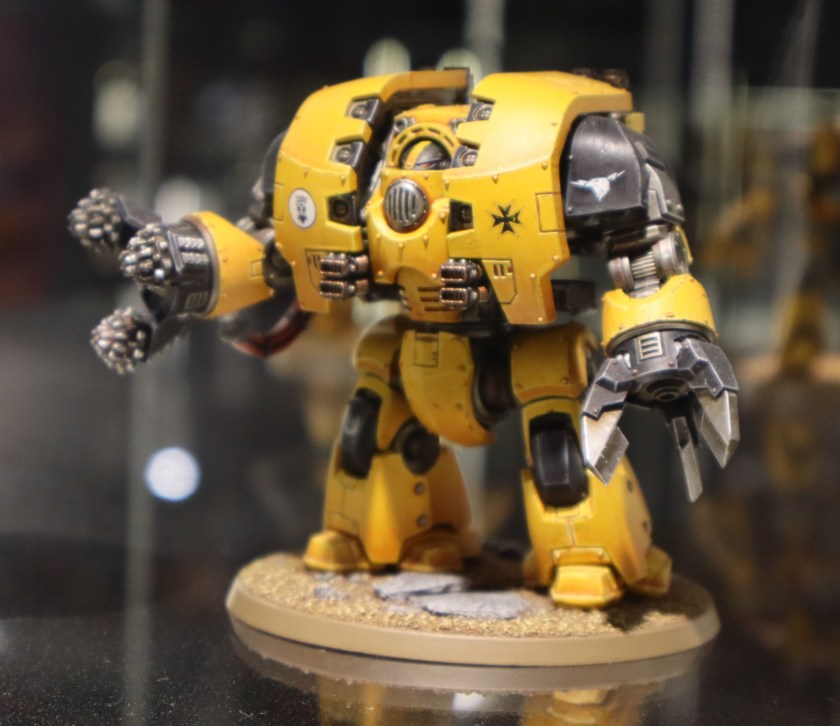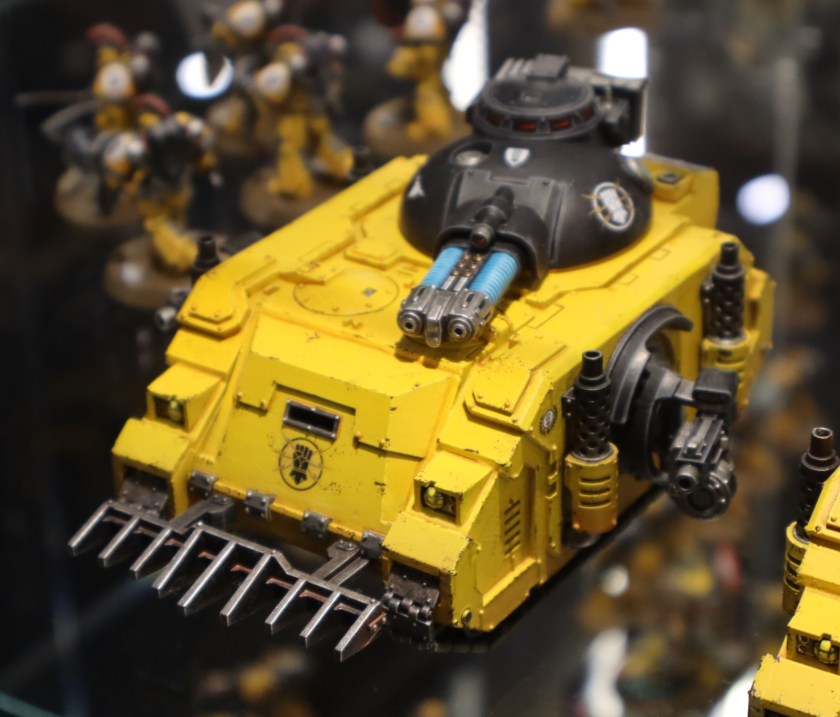This Imperial Fists Deimos Pattern Rhino was in the display cabinets at Warhammer World.

The Deimos Pattern Rhino is an iconic and reliable armoured personnel carrier used extensively by the Space Marine Legions during the Great Crusade and Horus Heresy. For the Imperial Fists, a Legion renowned for its expertise in siegecraft and fortified defence, the Deimos Pattern Rhino is a fundamental part of their armoured columns.

Its robust design, based on ancient Standard Template Construct (STC) technology, makes it well-suited for the relentless, grinding warfare that defines the Imperial Fists’ combat doctrine. The Rhino can transport a full 10-man squad of Legionaries, shielding them with its thick armour as it carries them swiftly across the battlefield. While the vehicle is primarily a transport, it can be equipped with various pintle-mounted weapons, such as a heavy bolter, multi-melta, or a havoc launcher, adding to the Imperial Fists’ already formidable firepower. The model kit for this vehicle often includes a transfer sheet with specific markings for the Imperial Fists and other legions, allowing hobbyists to easily customise their models.
More photographs of the Deimos Pattern Rhino.

Deimos Pattern Rhino

Imperial Fists Deimos Pattern Rhino

Imperial Fists Deimos Pattern Rhino

Space Wolves Deimos Pattern Rhino

World Eaters Deimos Pattern Rhino

Ultramarines Deimos Pattern Rhino
How I painted my Imperial Fists Deimos Pattern Rhino.











































